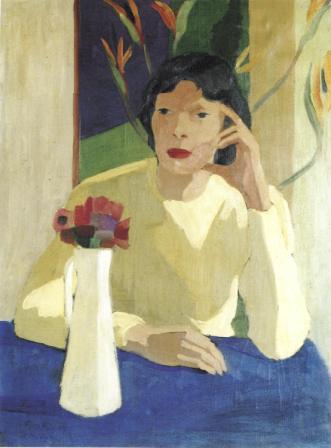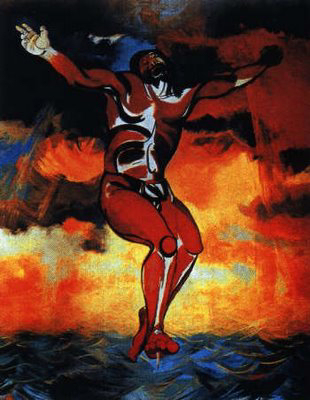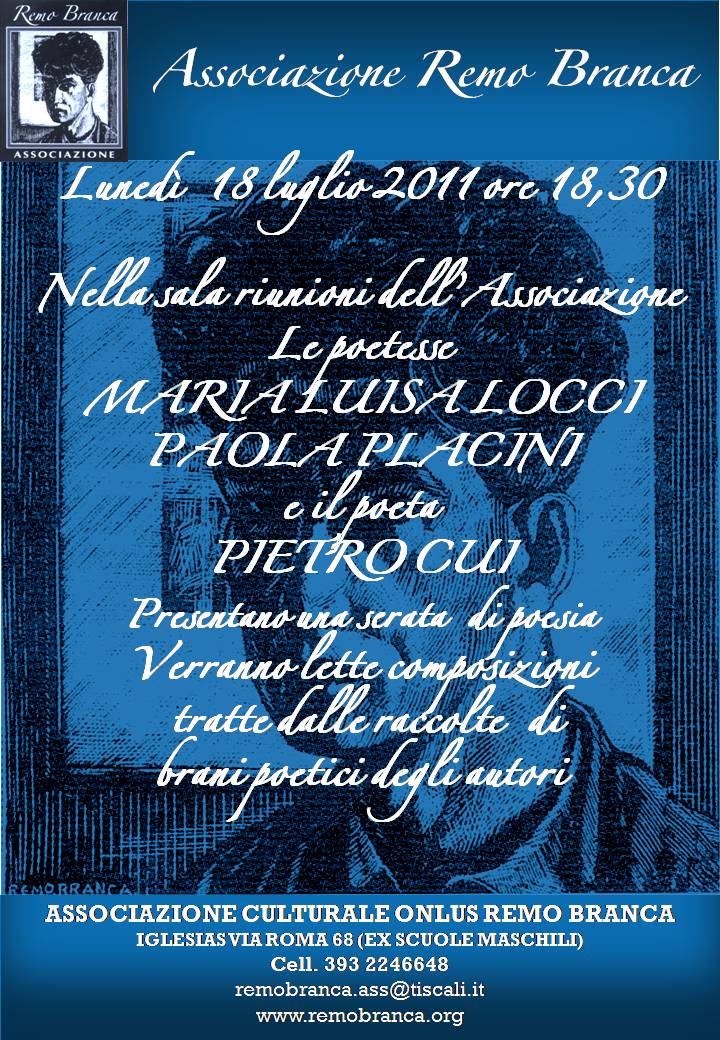 |
|
RITRATTO DI TERESA 1957, olio su tela, cm 80 x 60 L'UOMO 1977, olio su tela, mt 8x7
FOISO FOIS
Pittore e incisore, critico d'arte e saggista italiano (Iglesias, 28/12/1916–Cagliari, 21/2/1984). A lui è intitolata la sede delle Ex Scuole Maschili di Iglesias, via Roma, 68 che ospita l'Associazione Remo Branca.
Assieme a una sorella e un fratello trascorse la sua infanzia nel villaggio minerario di Ingurtosu, una frazione in comune di Arbus (Prov. CA), dove il padre era il direttore della locale miniera.
Foiso Fois visse per un periodo a Cagliari, dove conseguì il diploma di Perito Agrario, poi si trasferì a Genova per proseguire gli studi universitari in Economia e Commercio, ma a causa dei bombardamenti sulla città si rifugiò a Firenze dove si laureò nel 1942. Frequentò l’Accademia Albertina di Belle Arti di Torino, e qui si dedicò allo studio della sua grande passione: la pittura. Da questo momento ebbe inizio la sua formazione artistica di pittore, incisore e soprattutto d’insegnante.
Il suo volto sempre sorridente e mai triste non faceva trasparire la sua malinconia e la sua tristezza, nata dal ricordo dei duri avvenimenti vissuti nel periodo della guerra in cui visse il dramma della deportazione del fratello.
E’ stato uno dei maggiori esponenti dell’arte contemporanea in Sardegna. La sua opera è stata influenzata dalle problematiche del lavoro in miniera, dai problemi del quotidiano e dal suo impegno sociale speso in favore della Sardegna.
E’ del 1952 il quadro "La mattanza", segue la serie "I girasoli" (1957), poi Eleonora d’Arborea che doveva far parte, con La Rivoluzione di Giovanni Maria Angioj, del trittico "La Sardegna verso l'Autonomia". Il trittico però non venne mai ultimato.
Nel quadro "L’Uomo" rappresenta il Cristo nella croce; la grande tela di 9x7 metri dipinta nel 1977, che domina l’altare della Chiesa di S.Pio X a Cagliari, l’artista raffigura nella sofferenza del Cristo torturato e ucciso le ingiustizie e le crudeltà subite dagli uomini a causa di altri uomini.
FOISO FOIS
Painter and engraver, art critic and essayist, Italian, Iglesias was born in December 28, 1916, died February 21, 1984 in Cagliari.
He spent his childhood, along with a sister and a brother, in the mining village of Ingurtosu, a village in the municipality of Arbus ( province of Cagliari), where his father was the director of the local mine.
Foiso Fois, lived for a time in Cagliari, where he obtained a Diploma in Agricultural, then moved to Genoa to pursue university studies in economics and business, but because of the bombing of the city fled to Florence where he graduated in 1942. He attended the Accademia Albertina di Belle Arti of Torino, and here he devoted himself to study his passion: painting.
From this time began his artistic training as a painter, engraver and especially teaching.
Her face always smiling, never sad did not reveal its melancholy and sadness, born hard by the memory of events experienced during the war in which he lived the drama of the deportation of his brother.
It was one of the greatest exponents of contemporary art in Sardinia. His work was influenced by the problems of work in the mines, from the problems of everyday life and its social commitment spent in favor of Sardinia.
And The "Tuna slaughter" of 1952, the framework, followed by a series Sunflowers (1957), Eleanora of Arborea, which then had to part with Revolution Giovanni Maria Angioj , Sardinia triptych of autonomy. The triptych, however, was never completed.
The Man Under the big top canvas 9x7m represents Christ on the Cross, painted in 1977, dominates the altar of the Church of St. Pius X in Cagliari, the artist depicts the suffering of Christ tortured and killed, the injustices and cruelty suffered by men because of other men.


